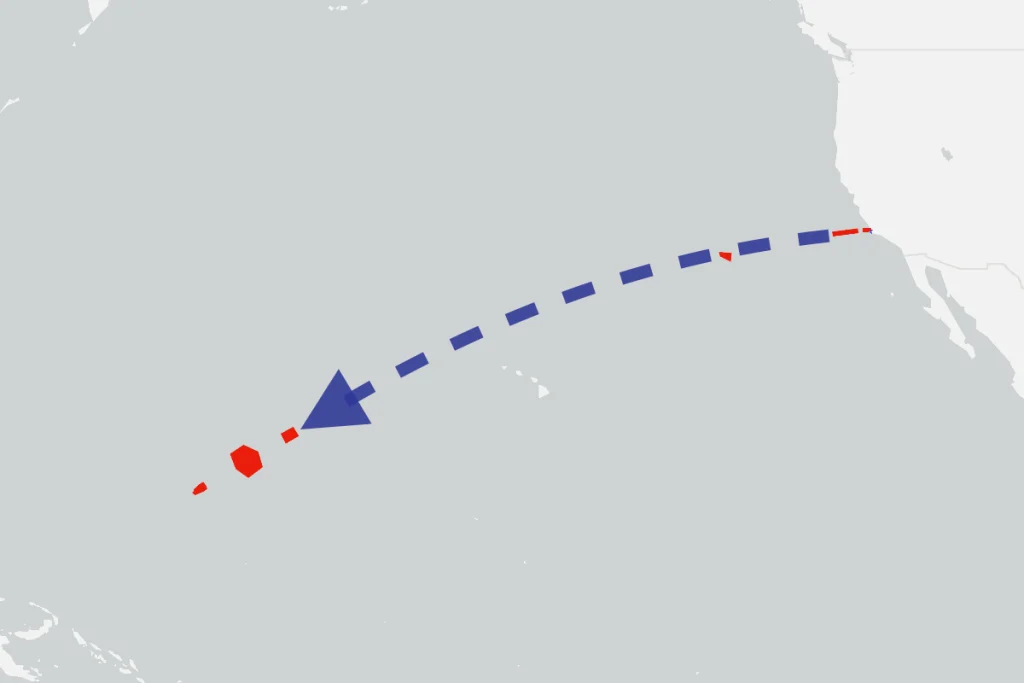U.S. Prepares for First ICBM Test Under Trump’s Renewed Testing Order
Recent navigational warnings have revealed that the United States is preparing to conduct a test launch of a nuclear-capable, though unarmed, Minuteman III intercontinental ballistic missile (ICBM). This test comes shortly after President Donald Trump announced his directive for the Department of Defense to resume nuclear weapons testing, citing ongoing testing activities by Russia and China. The scheduled test represents a continuation of America’s regular evaluation of its nuclear deterrent capabilities, though it arrives amid heightened global tensions and renewed focus on nuclear arsenals worldwide.
According to Marco Langbroek, an aerospace engineering lecturer at Delft University of Technology, the test is scheduled between Wednesday and Thursday, with the missile set to launch from Vandenberg Space Force Base in California. The missile is expected to travel approximately 4,200 miles westward to the Ronald Reagan Ballistic Missile Defense Test Site on Kwajalein Atoll in the Marshall Islands, following a trajectory similar to a previous test conducted in May. This represents routine procedure for the U.S. military, which regularly tests its ICBM fleet to ensure operational readiness, security, and effectiveness as part of its strategic deterrence strategy. While the timing has raised questions about potential connections to recent geopolitical developments, the U.S. Air Force Global Strike Command has historically maintained that such tests are planned well in advance and are not responses to current world events.
It’s important to clarify what these tests actually entail, particularly in light of Trump’s announcement. Energy Secretary Chris Wright has specified that these tests will not include actual nuclear detonations similar to those conducted in the past. Instead, they will evaluate all other components of nuclear weapons systems to verify their capacity to trigger an atomic explosion if necessary. This approach maintains the United States’ adherence to testing moratoriums while still allowing for verification of nuclear readiness. The upcoming test would mark the second evaluation of U.S. nuclear delivery systems since September, when a submarine fired four unarmed Trident II D5 Life Extension submarine-launched ballistic missiles in the Atlantic Ocean off Florida’s coast, demonstrating another component of America’s nuclear triad.
The Minuteman III system represents a significant portion of America’s nuclear deterrent capability. According to the Federation of American Scientists’ Nuclear Information Project, the U.S. Air Force maintains 400 Minuteman III ICBMs, which are deployed in silos across five states: Colorado, Montana, Nebraska, North Dakota, and Wyoming. These missiles have an impressive range exceeding 6,000 miles, making them capable of reaching targets across the globe. While 800 nuclear warheads are assigned to the Minuteman III fleet, each missile is currently deployed with only one warhead, though they technically have the capacity to carry up to three if military planners deemed it necessary. Despite their initial deployment in 1970, these missiles have undergone several modernization programs, including a major overhaul completed in 2015 that extended their service life until 2030, essentially making them “new missiles except for the shell,” according to Air Force personnel.
The context surrounding this test reflects the complex nuclear landscape of our time. Russia recently conducted tests of its nuclear-capable Poseidon torpedo, while China has unveiled a new ICBM purportedly capable of “covering the entire globe.” These developments underscore the ongoing strategic competition among nuclear powers and explain part of the rationale behind Trump’s call for resumed testing. The U.S. military’s consistent position, however, is that such tests represent “routine and periodic activities designed to demonstrate that the United States’ nuclear deterrent remains safe, secure, reliable and effective in deterring 21st-century threats and reassuring our allies.” With over 300 similar tests conducted throughout the program’s history, the Air Force emphasizes that these evaluations reflect America’s “ongoing commitment to maintaining a credible deterrent” rather than reactions to specific global events or crises.
The international community now watches with interest to see how Russia and China might respond to this scheduled U.S. test. While all three nations routinely conduct various evaluations of their nuclear weapons systems, the timing and public nature of Trump’s announcement have added an additional layer of significance to what might otherwise be considered a standard military procedure. The careful balance of nuclear deterrence relies not only on the technical functionality of weapons systems but also on the strategic messaging that surrounds them. As global nuclear powers continue to modernize their arsenals and delivery systems, these tests serve as both technical evaluations and signals of strategic resolve. How Moscow and Beijing interpret and respond to this particular test may provide insights into the evolving dynamics of nuclear deterrence in an increasingly multipolar world where nuclear capabilities remain the ultimate guarantee of national security for major powers.















